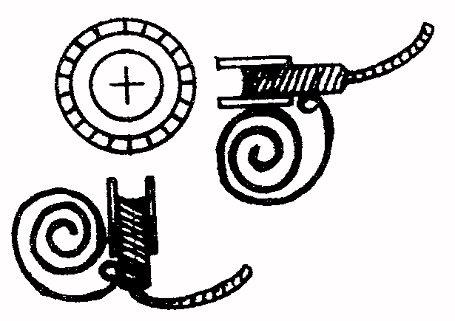Source: Lotus West
Author: John Kouba
Date:
Title: STARTER PROBLEMS & TWINCAM STARTER REBUILD
LW# 00EL075
When you turn the key to start your engine and only hear a 'click' from your starter, the problem may be traced to high resistance in the wire, which feeds current from the key switch to the starter solenoid. To check, bypass this wire by feeding current directly to the solenoid by means of a jumper wire. Even more simply, place a screwdriver blade between the hot terminal on the solenoid and the small terminal to which the key switch wire is attached. The starter should work if the problem was due to high resistance in the key wire.
The resistance in the wire may be due to many broken strands adjacent to the soldered connector, which attaches to the solenoid. Normal engine vibration will tend to "work harden" the wire as all of the bending occurs in a narrow area of the wire next to the connector. Clip off the connector, slip a tight fitting plastic or hard rubber sleeve over the wire to spread the bending strain over a larger area of the wire and solder on a new connector.
If you have determined that the starter is at fault and requires a rebuild, the following should be of help and offers some minor but important improvements.
First, to remove the starter motor from the Twincam, arm yourself with a 9/16" universal-joint socket with a long extension, moving the ratchet to the front of the motor. Disconnect the large battery lead, being careful the bolt does not turn. If the bolt starts to turn, generously douse in "Liquid Wrench" and hold bolt with "Vice Grips" with a rag around the threads. If all this does not allow the nut to be removed, disconnect the cable at the solenoid and try again when the starter is on the bench. lf nut cannot be removed without turning the bolt, get a rebuild. I have not found a successful method to reattach the bolt. A rebuild costs about $25).
Assuming the wire is off use your 9/16" socket on the bolts attaching the motor to the bellhousing. Take the motor over to a bench and remove the second nut from the terminal, again exercising caution. Next, remove the two bolts holding the starter together. As the back comes off, remove the brushes that come from the center section. You will now have four major pieces: Front Plate, Center Section, Armature and Back Plate. Clean oil and grit from the parts, checking for broken wires. If wires are broken a rebuild should be secured. Check the fit of the armature in the bushings in front and back plates. If it isn't snug obtain new ones. Many rebuild shops (Yellow Pages) sell the bushings. The old ones can be removed with a chisel and hammer, resting the plates on wood blocks. Refit, using the same support, with a socket and hammer.

Now for a trial assembly. Push the brushes out of the way and put the four parts together. There should be aligning keys so that there is only one way the three external pieces will go together. Put the two long bolts in. Now, push and pull on the shaft coming out the back. Travel should be a maximum of 1/16". If it is greater than this, note how much, disassemble and add some washers to the series of fiber washers on the armature. You can make your own.
Now, Final assembly: The wires that come from the center housing should be covered with electrical tape or a non-hardening gasket compound. Aviation "Permatex" works especially well. The springs holding the brushes should be pulled back and the brushes inserted. The brush will remain out of the way of the armature if the brush is pulled back and the spring pressed against its side: Bolt the starter together, “LocTiting” the long bolts. The springs can now be moved into correct position with a pair of long nosed pliers through the brush cover plate. Add nut to terminal. Put second nut loosely on and bring starter to the car. Hold the case to the frame and touch a live battery cable to the nut (not bolt). Starter should function. If it doesn't, recheck brushes, then internal wiring. Once it's functioning, seal all jointing surfaces with gasket cement and bolt tightly to the bellhousing.